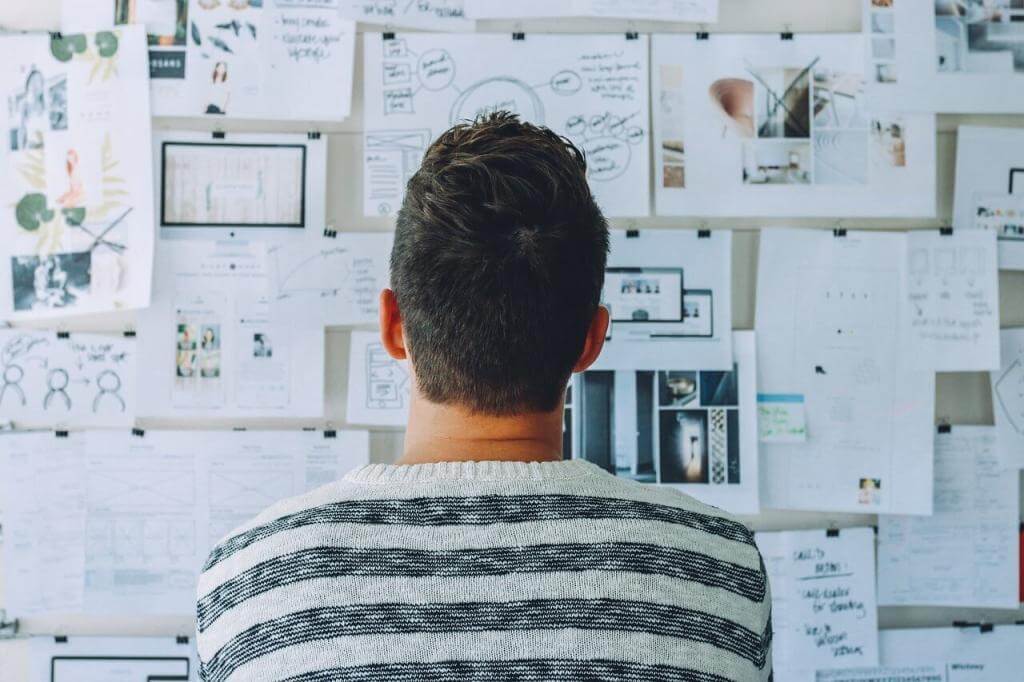The concept of Software as a Service (SaaS) has made significant progress over time. In fact, it was first noticed in the early 2000s and became essential to many businesses all over the world.
As time passed, market growth led to an essential part of SaaS progress, giving rise to a new class of software known as Vertical SaaS.
In this article, we will dive deep into the rise of Vertical SaaS, its potential impact on business operations, the difference between Vertical and Horizontal SaaS, and compare their pros and cons.
In addition, you’ll learn some Vertical SaaS integration case studies, which will help you get on the right track when choosing the perfect tool for your business.
As we dive deeper into this topic, you’ll discover the benefits, drawbacks, and challenges associated with Vertical SaaS.
Without waiting any longer, let’s begin!
What is SaaS?
So, first things first, before we dive into the subject, I’d like to touch base and recall about SaaS itself.
Software-as-a-Service, often called SaaS (or cloud–based software), is a way to use applications over the Internet instead of installing them directly on your devices. It changed the way businesses handle and pay for their software systems.
Instead of a significant one-time investment in servers and licenses, companies can rent the software they need and when they need it. Meanwhile, SaaS providers host and maintain the software, handle updates and patches, and ensure the platform is secure.
This oversimplified overview of SaaS is a perfect example of the “WIN-WIN” situation for both customers and SaaS companies.
It’s also worth mentioning that different SaaS solutions cater to various business needs. Among these types are Vertical and Horizontal SaaS, each providing a unique approach to delivering software services.
Alright, now, when we are perfectly equipped with the basics, it is time to get straight to the point.

What is Vertical SaaS?
When we talk about Vertical SaaS, we’re referring to a type of SaaS solution developed specifically for a particular industry or vertical market.
Let me repeat it:
“…developed specifically for a particular industry or vertical market.”
The ability of Vertical SaaS to provide industry-specific features sets it apart and allows highly personalized solutions.
Consider this scenario: You run a healthcare clinic, and you’re juggling a range of operations, including appointment scheduling, patient record management, and insurance billing. So many things to follow up on, right?
Wouldn’t having just one software solution built specifically for these needs be more efficient? This is where Vertical SaaS comes into play. As you may guess, in the given example, a Vertical SaaS solution was designed and developed specifically for the healthcare industry.
Compared to the wide-ranging applications of horizontal SaaS, vertical solutions might seem narrow. However, they tend to offer a deeper functionality for businesses in specific niches.
With industry specificity, innovation, and data-driven insights at its core, Vertical SaaS deserves its space in the world of cloud computing.
The Benefits
Vertical SaaS offers incredible potential for businesses in specific niches. By using a software solution tailored to your industry’s requirements, you’re avoiding the ineffective approach of trying to make incompatible elements work together.
So, let’s explore some of the key benefits:
- Streamlined Processes: Vertical SaaS solutions are designed with an in-depth understanding of the industry they serve. This means that the software aligns more closely with your processes, reducing the inefficiencies that can occur with more generalized software.
- Improved Customer Understanding: Accessing industry-specific analytics and insights is another advantage. Vertical SaaS providers often build in metrics and reporting features that make sense for their target audience.
- Increased Competitive Advantage: Using a tailor-made solution gives you an advantage in the long run. Standard software solutions may not fit the unique strategies that vertical SaaS solutions offer.
- Faster Implementation: As these solutions cater to specific industries, the implementation timeline is often shorter compared to horizontal SaaS.
In short, vertical SaaS solutions offer a more tightly fitted solution for specific niche businesses.
The Challenges and Limitations
Every approach has its pros and cons, and vertical SaaS is not the exception to this rule. Understanding the potential challenges and limitations associated with vertical SaaS is crucial.
Let’s delve into these aspects:
- Niche Market Limitation: While Vertical SaaS provides custom-made solutions for specific industries, this specialization could limit overall growth potential. That means their success greatly depends on a single sector’s market dynamics.
- High Competition: Because of the specific industry focus, competition within the sector can be pretty intense. Businesses must keep up with industry trends to stay ahead of the game.
- Dependency on Industry Health: If the Vertical SaaS industry faces a downturn, the SaaS business could also be hit hard. The success of Vertical SaaS is tightly bound to the health and evolving trends within the particular sector it serves.
- Customization Limits: Though Vertical SaaS products are inherently more customizable to specific industries, they might not cover all scenarios in every business within that industry. The costs and technical help associated with building custom features can be significant.
- Vendor Lock-in Risk: With Vertical SaaS, there’s a risk of becoming overly dependent on a single vendor for all industry-specific solutions. Businesses may face significant operational challenges if the service provider goes out of business, raises prices, or changes its policies.
Despite these challenges, vertical SaaS continues to grow in popularity because of its rich benefits.
AI in Vertical SaaS

Artificial Intelligence (AI) has recently become a big game-changer in many industries, and the world of vertical SaaS is no exception. With the proper implementation, AI delivers powerful benefits that can significantly boost specific business processes.
The power of AI-driven Vertical SaaS solutions lies in their ability to offer industry-specific solutions using in-depth AI analysis.
For instance, in the healthcare sector (which I mentioned earlier), a Vertical SaaS solution empowered by AI could analyze massive amounts of patient data to predict and manage health risks.
Similarly, in the retail sector, it could optimize inventory management by anticipating product demand.
However, while AI offers vast potential, it’s important to apply it judiciously. Without a thoughtful approach, businesses can easily become overwhelmed by data and make bad decisions based on misleading insights.

Vertical SaaS Examples
Here is the list of 7 popular Vertical SaaS software solutions, each catering to unique business needs within a specific industry:
- Healthcare — Cerner offers health information systems to manage electronic medical records and improve patient care.
- Real Estate — MRI Software provides property and investment management solutions, including tools for tenant management and financial tracking.
- Education — Pearson offers a suite of educational software tools, geared towards enhancing teaching and learning experiences.
- Construction — Procore provides a construction management software which assists in project management, cost control, and quality and safety routines.
- Retail — Shopify offers a comprehensive e-commerce platform, including tools for sales, marketing, and customer management.
- Financial Services — Temenos Infinity provides a digital banking platform with tools for customer engagement, transaction functionalities, and business analytics.
- Travel and Hospitality — Sabre offers a platform with tools for managing the entire traveler journey, from booking to post-trip services.
What is Horizontal SaaS?
Horizontal SaaS, also known as one-size-fits-all SaaS, offers a broad spectrum of solutions that fit companies in various fields or industries. While the ‘horizontal’ in its name might seem limited, it actually means “cross-sectional”, with the goal of meeting general needs in many different markets.
Think about popular SaaS products like Slack, Zoom, or Salesforce.
These software solutions don’t target a particular niche or an industry. Instead, they offer functionality essential to virtually any business regardless of their niche.
This is the most significant advantage of Horizontal SaaS — offering software services that any organization can use.
Horizontal SaaS Examples
Below is the list of 7 popular Horizontal SaaS software solutions:
- G Suite — Designed by Google Cloud, G Suite combines a broad set of intelligent apps to keep your team connected and creative.
- Salesforce — This leading CRM platform connects businesses to their customers in a smart and customized way.
- Slack — Slack is a channel-based messaging platform that provides businesses with a clear view of their team’s work.
- FlexClip — This cloud-based video editing platform empowers anyone to create professional-looking videos, perfect for marketing, social media, or even educational purposes, regardless of their industry or technical expertise.
- Zoho — This platform has a collection of over 40 cloud apps that can do everything you need for your business.
- Zoom — This communication tool provides video meetings, voice, webinars, and chat across different devices and locations.
- Dropbox Business — A secure file-sharing and storage solution that keeps your team and files in sync.
- Adobe Creative Cloud is an excellent example of a horizontal SaaS tool. Leveraging a broad application suite, from Photoshop to Premiere Pro, it caters to various industries, including education, entertainment, IT, and more.
The tools from the above list are not tied to a specific industry or niche and can be used across different industries and for various business needs.
Vertical vs Horizontal SaaS

As we already discussed the Vertical SaaS concept and touched on the base of Horizontal SaaS, it’s important to understand their fundamental differences, which are crucial when picking the right tool.
Key Differences
1) Industry-Specific vs General Solutions
Vertical SaaS solutions are industry-specific, targeting specific vertical markets such as healthcare, real estate, education, agriculture, etc. On the other hand, Horizontal SaaS provides general solutions catering to various industries with a broader target audience, like project management, customer relationship management (CRM), teamwork platforms, etc.
2) Functionality
Vertical SaaS often provides nuanced and detailed functions that cater specifically to the targeted industry, whereas Horizontal SaaS typically includes more generalized functions that can be applied across various industries.
3) Customization
With the more niche-focused nature of Vertical SaaS, it comes with greater customization options to meet specific needs within the industry. Horizontal SaaS has relatively less customization as it accommodates a wide range of sectors.
4) Integration
Horizontal SaaS solutions are likely to have wider integration capabilities due to their general applicability, while Vertical SaaS may integrate with fewer systems but offer more specialized levels of integration.
5) Implementation Time
Due to the more general functionalities, Horizontal SaaS can often be implemented quicker than Vertical SaaS. However, the extended timeline of Vertical SaaS deployment is usually justified.
As you may guess, this is because it involves in-depth customization to align with the unique workflow, regulations, and demands of specific industries. While it may take longer initially, the development time pays off in terms of effectiveness and efficiency in the long run.
6) Pricing
Generally, Vertical SaaS solutions tend to be more expensive due to their specialized services and higher development costs. Horizontal SaaS, being a more general solution, is typically cheaper.
7) Knowledge and Expertise
Another distinction is that providers of Vertical SaaS software have in-depth knowledge about a specific industry’s processes and requirements. In contrast, Horizontal SaaS may not offer the same level of industry-specific expertise.
Vertical or Horizontal SaaS: The Pros and Cons

When choosing business software solutions, understanding the pros and cons of vertical and horizontal SaaS platforms can be crucial.
Each comes with unique strengths and potential drawbacks that should be considered before making your final decision.
- Industry-Specific: Vertical SaaS software is tailored to meet the needs of specific industries.
- Functionality: Vertically oriented SaaS solutions cover specific functions in detail, making them more functional for businesses specializing in a particular niche.
- Customization: Vertical SaaS usually offers more customization options to fit the individual needs of different businesses within that particular vertical.
- Integration: Being designed with a specific industry in mind, vertical SaaS often integrates better with other systems used within a selected industry.
- Implementation Time: Vertical SaaS platforms take significant time to implement due to their complexity and highly specialized nature.
- Pricing: Often, vertical SaaS platforms come with a higher price tag. This can make it a less appealing choice for smaller companies.
- Knowledge and Expertise: Vertical SaaS solutions require a certain level of industry knowledge and expertise. Not having this can lead to a less-than-optimal use of the system.
- Industry-Specific Limitations: Focusing on a specific industry may limit the scope for innovative additions that apply to a broader range of industries.
So what’s the deal with Horizontal SaaS? Let’s find out:
- Flexibility: Horizontal SaaS products are flexible and can be used by businesses across a variety of industries, not limited to a specific one.
- Affordability: Given the larger target audience, companies can offer horizontal SaaS products at a more affordable price.
- Lower Learning Curve: These platforms are designed to be user-friendly and easier to understand.
- Breadth of Coverage: Horizontal SaaS solutions often offer a broader range of features and functionalities that can meet the needs of different businesses.
- Lack of Specialization: While horizontal SaaS solutions are excellent for generic business processes, their one-size-fits-all approach fails when specific industry requirements are needed.
- Integration Complexity: Horizontal SaaS solutions may not always integrate smoothly with other specialized tools used by a business, creating inconvenience and inefficiency.
- Dispersed Resources: Due to the diverse range of customers, support and updates may be slower or less reliable.
- Wasted Features: A wide range of functionalities can also mean that many features go unused, which results in overpaying for the software.
Vertical SaaS — FAQ
What is Vertical SaaS?
Vertical SaaS, or Software as a Service, is a type of cloud-based software that serves specific industry niches. It targets industries with unique operations, regulations, and requirements, delivering highly specialized solutions for the particular sector.
The good examples are: medical practices, construction firms, or the restaurant business.
What are the advantages of Vertical SaaS?
Vertical Software as a Service (SaaS) offers a multitude of advantages to its users. For one, they offer specialized features that are highly aligned with the needs of selected industries.
Such software often contains built-in compliance measures appropriate for a given vertical, resulting in less risk and greater ease of use.
Moreover, vertical SaaS providers often have expert knowledge in their niche, allowing for more effective customer support and market-driven innovation.
What is Horizontal SaaS?
On the other hand, horizontal SaaS is a software solution that focuses on providing services to a wider spread of industries.
These software solutions tend to be more general, focusing on core business functions that are common across different industries, like accounting, project management, or human resources.
What are the advantages of Horizontal SaaS?
Horizontal SaaS also presents a range of benefits. It can be used across a wide range of industries due to its broad focus on common business needs.
It is often cheaper and more scalable than vertical SaaS due to its larger market, and it may integrate more easily with other systems.
The interface typically has more user-friendliness to appeal to a wide audience, potentially leading to a more intuitive user experience.
What is the difference between Vertical and Horizontal SaaS?
Vertical and horizontal SaaS differ mainly in their targeted users and the scope of their services. Vertical SaaS is tailored for specific industries, catering to niche requirements with specialized functionalities.
In contrast, horizontal SaaS addresses a wider audience, providing solutions for general business operations. Essentially, while vertical SaaS goes depth-first into a sector’s needs, horizontal SaaS goes breadth-first across many sectors’ common needs.
Final Word.
To understand SaaS, we need to recognize a significant change: the rise of Vertical SaaS. Unlike horizontal SaaS, which aims to meet the needs of any business regardless of industry, vertical SaaS focuses on addressing highly specific needs within specific industries and sectors.
Why the Rise of Vertical SaaS?
One of the primary reasons driving the growth of vertical SaaS is the rising demand for industry-specific solutions that can address niche business requirements more effectively. As industries continue to evolve, so do their needs, prompting the demand for SaaS solutions that can cater to specific business processes and industry metrics.
In addition, vertical SaaS providers can offer a higher degree of customization in their solutions by enabling them to capture customer requirements more precisely. With a specific industry focus, they offer more streamlined and efficient services that perfectly fit their customers’ needs.
Lastly, vertical SaaS providers can leverage their deep industry-specific expertise to create products that provide in-depth solutions.
By integrating their understanding of industry trends and standards, they can develop solutions that truly resonate with the market’s requirements, thereby gaining a competitive edge.
But, the potential of vertical SaaS doesn’t end there.
According to FinancialNewsMedia, the Vertical SaaS market is projected to reach $307 billion by 2026, which means significant and continued growth for businesses operating within the Software as a Service sector.
Thanks for reading ❤️
